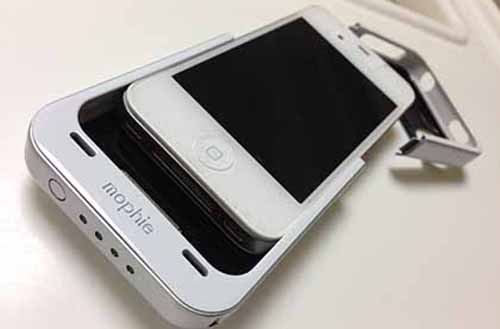How to avoid tech meltdowns on the road

As you look across the sparkling ocean you can see the sun is about to dip below the horizon. The sky turns different shades of pink and orange and the clouds provide a sharp contrast to the vivid colours of the sunset. You reach for your smartphone or camera to capture the moment and have a reminder of the beautiful place you are in and as you try to turn it on, you find the device is decidedly dead and has no signs of life.
This problem is an increasing worry for travellers who choose to bring their technological devices with them on the journey. These gadgets need power and they need it often, so instead of just bringing the device, you have to bring all the cords and cables and batteries along too. Here are a few quick suggestions to help you avoid tech meltdowns while you are travelling that won’t take up a bunch of space in your luggage.
Problem: dead phone or camera battery (with no way to charge it in sight)
Everyone comes across this problem at one point or another, but when you are on the road it is usually imperative that you have a fully charged and operating phone and camera with you. What to do if you know your phone doesn’t hold a charge for long and you’ll be out and about with no way to charge your device? There are a few options. You can carry the power cord with you in the off chance you come across a power outlet. Or if your phone allows it, carry a spare battery to switch in when your battery levels are running low. There are even some cases that have a built-in backup battery, like the Mophie. They are on the expensive end but if you travel frequently it may be worth the cost.
The other option to consider if you are truly going off-the-grid and camping is a portable solar-powered battery charger, like GoalZero. As long as there are sunny days, you’ll be able to harness the power of the sun to power your devices.
Problem: your camera’s memory card is full, but you’re in the field
Imagine you are on the safari and there are tons of fascinating animals around you. You want to snap a photo of them in their natural habitat and you are finally in a rhythm when the camera beeps and lets you know your memory card is full. What are you going to do?
The easiest solution is to upload the photos to a computer to free up space on the card. But if that option isn’t available it would be nice to have another solution beyond deleting the photos you just took. It eats up battery space and you don’t want to accidentally delete a great photo because you are rushing to make room on the memory card. The best way to prevent this from happening is to carry an extra memory card. They are small, portable and easy to bring along.
Problem: your equipment has been lost or is broken
Lost or broken equipment on the road isn’t fun in the slightest. It can happen anywhere, at any time and in a variety of ways, so the best advice is to remain vigilant and protect your gear wherever you go. There are some companies that specialize in travel bags that are designed to keep technology—like laptops and cameras—safe, like Pacsafe products.
It’s also a good idea to buy travel insurance that covers your electronics. Read your policy carefully to understand what is and is not covered and how replacement value works. Then keep a record of your equipment in order to accurately tell your insurance company what has been damaged or lost. When packing for your trip, be sure to group all your electronics together and photograph them so you can prove what you had in case you need to make a police report. Better to be safe than sorry in the event your tech devices become lost or broken.
Problem: your phone is dropped in water.
This is a universal and common problem for high-tech devices. In the many attempts people have made to resurrect their phone from a watery grave, people have figured out a way to revive the dunked device. After retrieving your phone, turn it off, wipe it dry, take the battery out of the device (if possible) and cover it completely with uncooked rice for 24 hrs. Apparently, the rice can absorb the moisture from inside the phone and potentially bring it back to life.
If you have Butterfinger tendencies, it may be worth it to take precautionary steps to avoid seeing your phone take a plunge into the water. There are cases that are specifically designed to be waterproof like InDepthCases, LifeProof and OtterBox.
Be sure you can capture that magical moment every time you reach for your technology: protect your holiday and cover your devices with a customized travel insurance plan from Cover-More New Zealand.
Image courtesy of Flickr user Tatsuo Yamashita